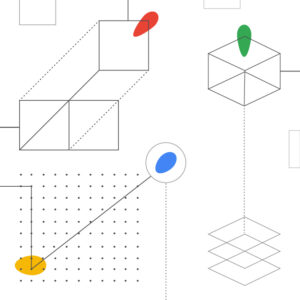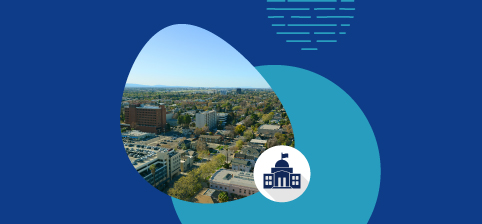The significant growth of the amount of data produced by organizations has driven data governance initiatives across the country—a trend that has revealed the need for operational efficiency when handling large amounts of data. There is no shortage of products to address this new challenge, but not all solutions are created equal.
Not only do organizations want a solution for efficiently storing and managing databases, they want a faster and more capable way to get insights from that data. Right now, legacy data storage solutions do not have the structure or security needed to efficiently glean insights from the information they store. A serverless model allows for both scalable storage and efficient data analytics capabilities—a platform where an entire use case or initiatives can be implemented in a matter of seconds. This type of operational model essentially reduces both the cost of running such a platform and the operational overhead, creating a smaller infrastructure footprint.
As organizations seek to organize and analyze their data, understanding the risk management and decision making involved in big data management is critical for compliance and optimizing control over the data.
 Data Ingestion and Integration
Data Ingestion and Integration
The initial phase of any smart analytics project is data ingestion—bringing in large sums of data to transfer and process for the new platform. Conducting data discovery, especially when handling bigger databases, is essential to mapping out a plan for data ingestion. This can be done by identifying the organization’s data pipelines, since most businesses have multiple sources and applications that data will need to be drawn from. All of that disparate data has to be prepared, transformed, and optimized for analysis and visualization within the new cloud platform.
Fully-managed and highly-scalable data discovery services can help with handling potentially sensitive information—they can identify and mask personally identifying information or protected health information before migrating it to the cloud.
The easiest way to conduct the actual data ingestion process is by using a data or storage transfer service that has the core infrastructure needed to scale up as needed. Cloud-based, serverless platforms can support both batch-based and stream-based processing data, as well as the abilities to collect, process, store, and analyze data at scale.
The next step is data integration, which takes broad sets of connectors to extract and blend the data from relational databases or applications, as well as different file types—from flat files to healthcare system datasets to unstructured data. Using AI, users can convert audio files to text through natural language processing and sentiment analysis, and extract features from images and documents as well. Data integration allows all types of data to be seamlessly managed and analyzed in the new platform, and makes the data more consistent and identifies quality issues, reducing concerns over whether data analysis can be trusted.
Ongoing Data Collection and Management
Once the data is securely set up in the cloud, the next step is to identify the source where the data will be securely staged. This tool should focus on finding insights, run on batch- and stream-based processing, and conduct analytics transactions and data warehousing. Enterprise-scale data solutions should provide both storage and data management—from running SQL queries to machine learning and real-time analytics of streaming data.
One other component to take into consideration is securing the ongoing process of data collection from on-premise applications to the cloud—this can be done through a private IP. If an organization has an Oracle database that should be connected to the cloud, for example, the cloud platform should provide a private IP capability, a customer-managed encryption key, and exploitation protection. Using this setup, data from Oracle can be encrypted at rest and securely transferred into the cloud.
The process of ongoing data collection highlights the importance of keeping data secure both during the transfer and within the new platform. Data governance, compliance, and security are critical attributes in a cloud platform tool. Finding a platform that is aligned with industry-leading certifications and offers data encryption, identity and access management, and data loss prevention is the best way to keep data secure.
Analytics and Machine Learning
Once an organization has established its serverless data platform in the cloud and secure batch and stream processing, it can start taking advantage of the platform’s analytics capabilities. Analytics tools can run SQL queries from system administrators and support machine learning and real-time analytics of streaming data to find meaningful insights.
Creating a machine learning model is a two-step process. The first step is to create the model, and once the query is run, the machine learning model is created in SQL and can predict an outcome. Using SQL-powered analytics and machine learning can be conducted by a system administrator—it doesn’t require a machine learning scientist to create those machine learning models. These capabilities empower an organization’s existing database administrators, data scientists, and data analysts by making sure that they can find the meaningful insights out of the data using a programming language they are comfortable with.
All of these capabilities can be seamlessly achieved with Google Cloud Platform. The serverless, fully managed approach includes Cloud Pub/Sub for data ingestion, Cloud Data Flow for integration, Cloud Data Catalog for data discovery, and BigQuery, which powers SQL-based analytics and machine learning. To learn more about how Google’s Cloud Platform can benefit your organization, join the webinar series conducted by Carahsoft and Google Cloud.






